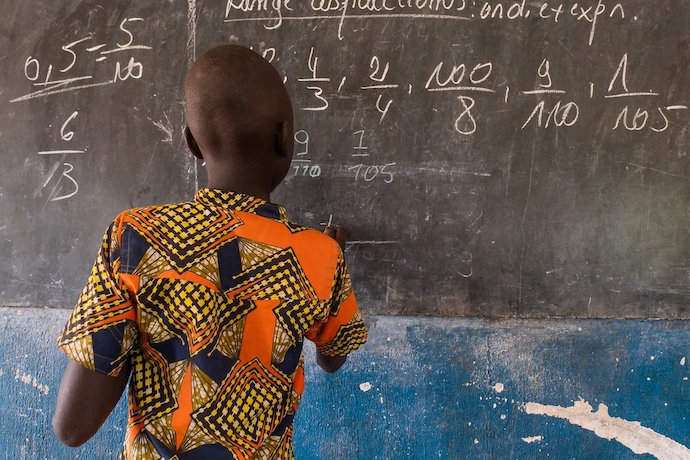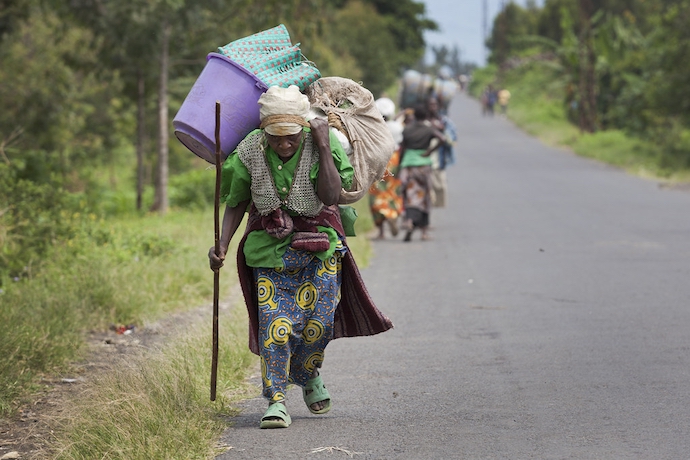
The Myth of Mineral Blame in Eastern Congo’s Endless Wars
Recent developments in eastern Democratic Republic of the Congo (DRC) have once again brought media attention to the country’s long-suffering eastern provinces. As coverage resurges, so too does the reflexive framing of the region as “mineral-rich”—a label that conveniently fuels the notion that Congo’s vast mineral wealth lies at the heart of its decades-long instability. But this narrative, though persistent, is both misleading and counterproductive. It has, in fact, hindered efforts to build lasting solutions.
The fixation on Congo’s mineral wealth is far from new. The “conflict minerals” trope has served for years as a go-to explanation for the frequent violence in the eastern region. The core of this argument suggests that the area’s instability stems from fierce competition over its valuable mineral resources—a struggle ostensibly driven by global consumer demand.
Given the enduring and often confounding nature of conflict in eastern Congo over the past three decades, it’s not surprising that NGOs have leaned on the “conflict minerals” narrative to simplify their advocacy. Executives in these organizations knew that the full complexity of eastern Congo’s situation would overwhelm policymakers and donors, who are more responsive to succinct, emotionally resonant messaging. Complex truths don’t make for digestible talking points.

With the latest re-emergence of the M23 rebel group and renewed media focus, it’s evident that this reductive narrative remains intact. This is despite the fact that the presumed causal link between natural resources and conflict in eastern DRC has been repeatedly challenged in academic and policy circles.
To flatten such a deeply layered conflict into a tale of greedy combatants fighting over gold or coltan is not only simplistic—it erases the historical and political dimensions at play. In Conflict Minerals Inc., Christoph Vogel argues that this “ahistorical” and “apolitical” interpretation stems from an “Orientalist” approach to understanding Congo. He warns that while the “conflict minerals” narrative may appear straightforward, it has significant and damaging consequences. It is, as he puts it, “flat in essence but exuberant in consequence.”
This framing, promoted by both advocacy groups and the media, has had a profound influence on international policy frameworks. These frameworks, in turn, have aimed to break the link between minerals and militancy by creating so-called “conflict-free” supply chains. The logic follows that if in-demand minerals fuel violence, then insulating supply chains from armed actors should stop the bloodshed.
This line of thinking inspired initiatives like the 2010 Dodd-Frank Act, which mandated that companies source minerals from verified, militant-free networks. But the policy failed to achieve its central aim. Gaps in monitoring mechanisms—combined with the reality that profit-seeking is not what motivates most armed groups in eastern Congo—meant the initiative did little to reduce violence. A mineral monitoring mechanism was first deployed in Congo in 2011. Since then, the number of armed groups in the region has increased dramatically—from around 30 in 2013 to more than 120 today.
A U.S. congressional report from October 2024 acknowledged that while the policy encouraged greater transparency in sourcing, it failed to curb violence. In some cases, it even made things worse. By aiming to formalize and industrialize mining operations, the policy excluded many artisanal miners, unleashing a labor shock in informal economies and intensifying the poverty that fuels recruitment by armed groups.
Communities that once earned modest but meaningful incomes through artisanal mining suddenly found themselves shut out of the market. Many turned to armed groups as a means of survival. These groups, no longer able to profit from mineral extraction, diversified their revenue streams—turning to looting, kidnapping, and racketeering. Resource exploitation is not the driving force for most of these armed factions; it is just one among many strategies used to survive. As the congressional report bluntly states, “The absence of minerals would not end conflict in eastern DRC.”

Much of the violence stems from deeper, older roots. Under colonial rule, administrators employed divide-and-rule tactics to maintain power. After independence, Kinshasa continued to manipulate identity politics in ways that further entrenched local grievances. These unresolved political, ethnic, and economic issues form the true foundation of eastern Congo’s prolonged instability.
Efforts to address these underlying problems have been consistently undermined by a tendency to favor simplistic, tidy narratives that promise equally simplistic, tidy solutions. But these shallow fixes do not provide an off-ramp from violence—they merely reinforce the structures that sustain it. In this context, militarized resource extraction becomes a consequence of violence, not its origin.
The Congolese state has long failed to provide essential public goods. Infrastructure is scarce, and security is elusive. The national army, the FARDC, is frequently seen not as a protector but as a principal perpetrator of violence. As state authority deteriorates, repeated waves of displacement further fracture communities and provide a steady supply of new recruits for armed factions. These dynamics existed well before the latest M23 resurgence and would continue even in its absence.
Nevertheless, global media outlets often return to the idea that renewed fighting must be driven by a renewed thirst for Congo’s minerals. President Félix Tshisekedi has helped propagate this view, asserting that M23 and Rwanda are waging war to seize control of mineral deposits. While this assertion may seem plausible on the surface, its real function appears more political: to elicit international sympathy by appealing to a familiar and evocative narrative.
Predictably, the United States and the European Union responded with new rounds of sanctions targeting M23 leaders and Rwandan officials. But this response misses the mark. Rwanda, for all its complicated regional entanglements, has more to lose than to gain from the kind of resource grab Tshisekedi describes. These punitive measures, like others before them, do little to address the reasons why armed groups persist. Instead, they add to a long history of failed interventions and misdiagnosed problems.
As the conflict in eastern Congo continues, it’s imperative that media, policymakers, and advocates move beyond one-dimensional explanations. The lessons of the last decade are clear: reducing the war to a matter of minerals has produced solutions that not only failed—they exacerbated the crisis. This misleading narrative has allowed real culprits to escape scrutiny while scapegoats take the fall.
The challenge ahead lies not in repeating the same mistakes but in rejecting reductive frameworks. If the international community truly wants to support peace in eastern Congo, it must be willing to grapple with the region’s complex history, power dynamics, and systemic failures. Only then can it begin to help untangle the enduring knot of violence.
